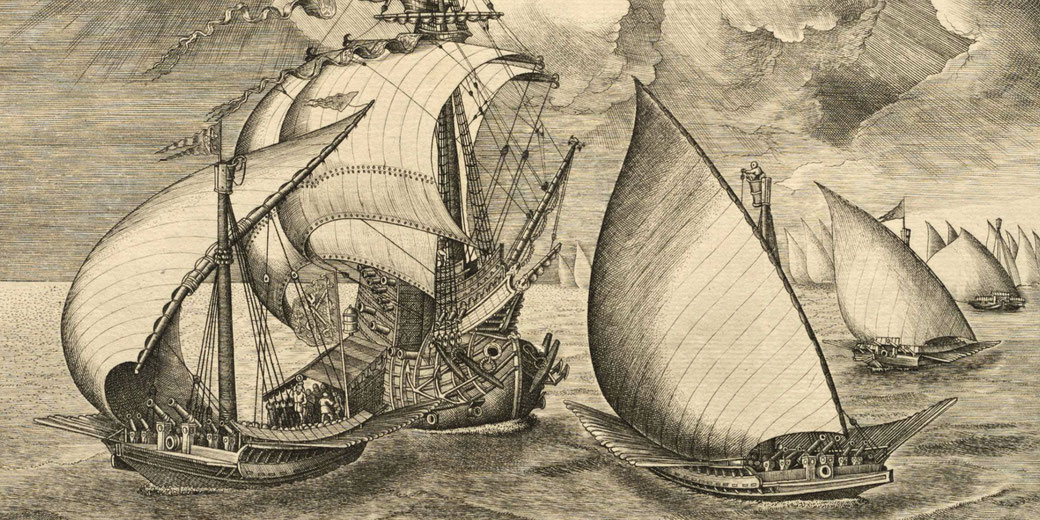The surprising role of tiny caravels in global exploration

Whenever studying the history of European exploration, references to ships called ‘caravels’ appear frequently. Many people are therefore surprised to learn that one of the most important ships that explorers relied upon was incredibly small and unassuming.
Even though they were modest workhorses of the sea, during the 15th and 16th centuries, these vessels were central to mariners’ ventures into uncharted waters, linking distant worlds through trade and conquest.
The unique design of caravels
Caravels distinguished themselves from other ship types of their era primarily through their innovative design features that enhanced maneuverability and speed.
Unlike the heavier carracks and galleons, which were typically used for carrying large cargoes and armed troops, caravels were lighter and faster, making them ideal for exploration and quick voyages.
Developed primarily by the Portuguese for the open seas, they were intentionally designed to be nimble, were typically ranged between 50 to 200 tons, whereas galleons and carracks could exceed 500 tons.
This difference in size allowed caravels to access shallower waters and navigate more safely near coastlines, critical for charting new territories.
Among the key differences was the rigging system. Caravels used a combination of square and lateen sails, which allowed them to harness winds more effectively for oceanic voyages.
By contrast, the larger galleons predominantly relied on square sails, suited for bearing heavy loads but less efficient against headwinds.
This rigging versatility in caravels significantly reduced the limitations posed by wind directions, enhancing their capability to explore against prevailing winds.
With these design advantages, caravels could undertake voyages with reduced crew sizes, typically 20 to 30 men, compared to the crews of up to 200 required for the larger ships.
From a construction perspective, caravels utilized a lighter, more flexible frame system.
This method, known as the ‘carvel construction’, involved laying the planks of the hull edge to edge, a technique that differed markedly from the clinker construction used in earlier Norse ships where planks overlapped.
Consequently, caravels required less maintenance due to their smaller size and simpler construction, which translated into lower operational costs.
This economical aspect made caravels particularly attractive for exploratory missions that were funded with uncertain prospects of immediate financial return.
Caravels in the Age of Discovery
Caravels first proved their worth in the pivotal voyages of the Age of Discovery. Integral to their functionality was the caravel's ability to carry considerable cargo despite its modest size.
This feature was critical for long voyages where provisions and trade goods needed to be stored.
Additionally, the rounded stern and forecastle improved the ship's stability. In 1492, Christopher Columbus embarked on his historic journey across the Atlantic in the Santa Maria, a nao or carrack, flanked by two smaller caravels, the Niña and the Pinta.
The nimble caravels proved ideal for traversing the vast and unpredictable Atlantic.
Their ability to sail windward significantly outperformed older ship designs.
By the late 15th century, caravels were at the forefront of European maritime exploration, heavily used by the Portuguese during their expeditions along the African coast.
Vasco da Gama's voyage to India in 1497 was a key example of how far caravels could travel: beyond the coastal waters of Europe to the challenging environments of the Indian Ocean.
On these journeys, their capacity to handle various wind patterns and sea conditions was unmatched.
As a result, the caravel became a symbol of exploration and conquest during this transformative period in history.
Their robust construction and versatile capabilities made them indispensable in the quest for new routes and territories.
Why caravels became so crucial to global trade
The impact of caravels on global exploration can be quantified by examining the expansion of trade routes and the increase in maps and navigational charts that followed their widespread use.
By the early 16th century, European maps began to include details of coastlines and island chains previously unknown to Europeans, with data collected from voyages undertaken on these ships.
In a matter of decades, caravels helped increase the known world's size by an estimated 50%.
Moreover, the speed and agility of the caravel allowed for the faster relay of information and goods, reducing the time taken for round-trip voyages by up to 25% compared to older ship types.
Moreover, caravels enabled navigators to undertake multi-year voyages across previously unnavigable waters.
This led to the discovery of lucrative trade routes to Asia and the Americas. As a result of these expeditions, European nations gained access to exotic new products, which significantly impacted their economies and societies.
The widespread adoption of caravels was instrumental in establishing Europe's maritime dominance and ushered in a new age of prosperity and cross-continental influence.
What do you need help with?
Download ready-to-use digital learning resources
Copyright © History Skills 2014-2025.
Contact via email
With the exception of links to external sites, some historical sources and extracts from specific publications, all content on this website is copyrighted by History Skills. This content may not be copied, republished or redistributed without written permission from the website creator. Please use the Contact page to obtain relevant permission.





